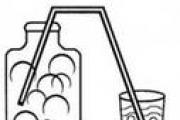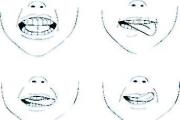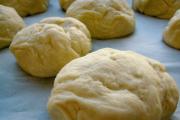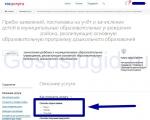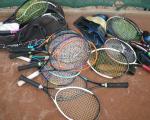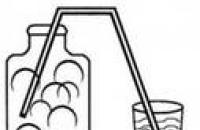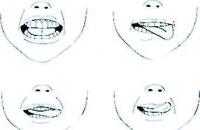Gloves are a beautiful and useful thing. They can not only warm, but also decorate, make the image more sophisticated, calm, or vice versa - bright, catchy. Crocheted gloves offer a particularly wide variety of models for all seasons and occasions, which create worthy competition for models created with knitting needles.
It is due to this method of execution that gloves can turn out to be both dense and textured, and very thin, openwork. Of course, the deciding factor will be the yarn you choose - it is responsible for the warmth, thickness and degree of delicacy of the product. Such a variety of knitting possibilities allows you to get equally beautiful gloves for women and girls, comfortable and practical gloves for children, and warm gloves for men.
Crochet gloves - diagram and description
Let's take a closer look at the most common options for crocheting gloves, including a method of crocheting products for beginner needlewomen. We will also learn how to crochet mitts - fingerless gloves, and we will analyze in detail the methods of knitting men's, women's and children's gloves.
Knitting for beginner needlewomen

Crocheting gloves provides the opportunity to create fairly thin, but dense and warm products. Let's try to create one of these, while performing a simple pattern of the same type.
Popular articles:
Crocheting gloves for beginners starts with definitions
hand measurements
. You can do this as follows: trace your palm with a pencil or pen on a sheet of paper. Now, in accordance with the diagram, we measure the following indicators:

A- the width of the palm at the base of the fingers (the approximate width of our glove); B- the distance from the base of the palm to the bend of the thumb; C— the distance from the base of the palm to the tip of the middle finger (glove length without cuff); D- the distance from the base of the palm to the base of the little finger.
Materials for work:
Progress
We collect a chain of chain loops equal in length to the circumference of the wrist + 1 cm to freely put on the glove. We connect the chain into a ring with a connecting post and to start knitting the first row we make 3 lifting air loops.
First row knit st. s/n and finish the row with a connecting loop in the last lifting loop. Next for knitting second row make 2 air lifting loops and knit an elastic pattern, alternating convex and concave relief columns. Finish the row with a connecting loop. Next rows Knit elastic bands the same way as the second one. Glove cuff knitted with pattern The elastic band can be of any width from 4 to 6 cm at your discretion.
Then we move on to knitting main part of the glove. We knit the glove in half columns in circular rows in a spiral, that is, we do not make lifting loops, then the seam of the initial loops of the row will not be visible.
For yourself, mark the sides of the glove where the thumb will be located and where the little finger will be located.
Having connected 2-3 circular rows with half-columns along the side near the side of the thumb, we begin to make additions to expand the wedge of the thumb. To do this, in the next 5-7 rows, add one half-column at a time, knitting two from one loop.
When the height of the knitting reaches the base of the thumb in the last row, without tying 6-7 loops to the edge, we pick up a chain of 8-9 chain loops and fasten it into the arch through 12-14 loops of the previous row. This creates a hole for the thumb, which is knitted last.

Before you start knitting the fingers of the glove, calculate the loops for each finger. You can identify them by trying on the glove and noticing the loops on the inside and outside. To knit the little finger, attach the thread from the palm side, make 3-4 air loops and attach the arch to the back of the glove. Next, knit half columns in a circle to the height of your little finger.

Closer to the tip, make decreases on both sides of the finger to narrow it. When you have knitted your finger to its full height, close the loops by knitting single crochets in a circle - one of the two loops. When the hole narrows, cut the thread and secure it by pulling the tip through the loop. Insert a needle into the remaining tip of the thread and mend the remaining hole, thread the thread on the wrong side.
If you look at your hand, you will see that the fingers are located at different heights - the first little finger, the index finger a little higher, and the middle and ring fingers at the same level. Therefore, after knitting the little finger, return to knitting the main part of the glove. Taking the remaining thread to work, knit one circular row with half-columns along the inside, the arch at the base of the little finger and the outside of the glove. Now you can knit the ring finger. Attach a new thread to the inside, tie a chain of 4 chains. loops and secure the arch on the outside (photo 1).
Knit half stitches to the height of your finger, narrowing it at the top, making decreases along the sides. Finish the knitting in the same way as on the little finger - make decreases by knitting two single crochets together until the opening narrows to a small hole.
Take back the remaining main thread and knit one round row through the arch of the ring finger. Next, attach the thread for knitting the middle finger. If you get a large hole for your finger at the base, then make decreases in the corners, knitting two half-stitches together (photo 2).

Knit the index finger with the thread left from the main part of the glove. Attach the thumb yarn and knit in the round in half stitches, decreasing at the corners first, knitting two half stitches together until the hole is equal to the diameter of the finger. Next, knit it to height and narrow it with single crochets.
The glove for the other hand is knitted in the same way, but in a mirror image. The back part can be decorated with a knitted flower or embroidery.

Model without fingers

Very popular nowadays, fingerless gloves, also called mitts,
allow you to drive and use your phone quickly and without discomfort. In addition, the process of knitting this model is much simpler than knitting simple gloves - because here you do not need to work with each finger separately. , since they are knitted for both the summer and winter seasons. Let's take a closer look at how to crochet fingerless gloves, which look very impressive in the autumn and winter.
Materials for work:
- yarn “ADELIA Jessica” (67% wool, 33% polyester, 260 m/100 g);
- hook number 3.
Progress
First, you need to make a chain of air loops of such length that, folded in half, four fingers can easily fit into it. We will knit the mitt from top to bottom - from fingers to wrist. Let's close the chain into a ring using a connecting stitch, knit two chain stitches and then three rows of single crochets (photo 1).
Next we move on to knitting with lush columns. A lush stitch is three or more “under-knitted” double crochets, knitted in one loop at the end. In this case, the lush columns consist precisely of three “incomplete” double crochets. To make a fluffy stitch, we make a yarn over, insert the hook into the loop of the previous row and pull out the thread. We knit the thread into the resulting loop and yarn over (photo 2).

There are two loops on the hook. Let’s yarn over again and again “loosely knit” a simple double crochet (photo 1). There are three loops on the hook (photo 2). Let's repeat everything again - there are four loops on the hook (photo 3). Finally, we knit all four loops at the same time (photo 4). The lush column is ready!

We knit three rows of puffy stitches, then three rows of single crochets, then two more rows of puffy stitches. In principle, the alternation of different knittings can be anything - it all depends on the taste and desire of the knitter.
We have come to the base of the thumb. We knit a chain of fifteen air loops and attach it with a connecting post to the main knitting four loops from the beginning of the chain. Let's try on the mitt - the thumb should fit freely into the hole intended for it. If the hole is smaller or larger than you need, change the length of the chain (photo 1).
Let's continue knitting in the circle with single crochets - only the row has become longer by fifteen (in this case) loops. Here it is more convenient to knit in a spiral, without lifting loops (photo 2).

Having knitted two rows with single crochets, we begin to make decreases. It is best to do them this way: evenly decrease four loops in a row - knit the next row without decreasing - decrease four loops again - knit the row again without decreasing. There are four rows with decreases in total. Having finished decreasing, we will knit another four to five rows without decreasing. Let's complete the knitting with five rows of embossed stitches.

The details remain: the upper part, like the hole for the thumb, can be decorated next to a picot, having previously knitted two or three rows of single crochets. We knit the second mitt in the same way as the first. A pair of fingerless gloves is ready!
Master class - how to knit men's gloves

As good gift You can crochet men's gloves for a dear person. This will not take much time and effort, especially if you work according to the master class on crocheting gloves. In this case, we'll talk about beautiful gloves that will look great in a monochromatic, moderate color scheme, preferably black, gray, dark blue.
To begin with, you should also trace the outline of a man’s hand on paper, or measure his old gloves.
Materials for work:
- thin acrylic or wool blend yarn;
- hook No. 2-2.5.
The gloves are knitted in the transverse direction from the little finger to the thumb. One glove consists of two parts: the back with four knitted fingers and the inner with a knitted fifth thumb. We sew the finished halves of the glove together; finally, tie the cuff along the bottom with an elastic band made from embossed columns.
Progress
Cast on the initial chain of chain stitches from the beginning of the cuff to the tip of the little finger according to the pattern. Next, knit rows in single crochet stitches the width of your little finger. Start each new row of columns with one lifting air loop.
When knitting single stitches towards the fingers, knit to the base of the ring finger and cast on a chain of chain stitches up to the tip of the ring finger.

The inner half of the glove is knitted exactly the same as the back half up to the middle finger. At the beginning of knitting the index finger, in a row of stitches in the direction from the cuff to the fingers, tying the stitches to the base of the thumb, cast on a chain of chain stitches equal to twice the length of the thumb. Close the chain in long loop, continuing to knit stitches in a row to the base of the index finger, then cast on a chain of chain stitches to the length of the index finger.

Work several rows of single crochets, first along the index finger chain, along the wrist row to the thumb loop, then along the thumb chain and then to the cuff. Having turned the work, knit the stitches in the opposite direction until you have knitted strips the width of your index finger and thumb.
Place the two halves of the glove, the back and the inside, together. You can connect them by crocheting a row of connecting posts along the contour or simply sewing them with a needle; also sew the sides of the thumb. Turn the sewn glove over to the other side so that the seam is on the inside.

Along the bottom of the glove, first knit a row of double crochets, then two rows of embossed stitches, alternating convex and concave. Knit the second glove in exactly the same way, only when sewing, place the pieces so that the thumb is on the other side.

How to knit openwork gloves for a woman

Adding gloves to your wardrobe is always a great idea, as they keep your hands warm and complete the look. female image in the cold season. Even needlewomen without much experience can do this with their own hands; you just need to select a detailed knitting pattern with a description. Let's look at how to create openwork crocheted gloves with step-by-step photographs.
We take measurements
Using the hand measurement method indicated at the beginning of the article, we determine the size of future gloves. Now you need to calculate the required number of loops. Usually, in descriptions of knitting gloves they mention how many loops are contained in a 10*10 cm sample. However, you can do it simpler: knit a small sample (10-15 loops, 4-5 rows) and find out how many elements are in whole centimeters.
In this case, there are 3 double crochets per 1 cm, that is, initially 3 air loops. The width of the glove is 8 cm, which means 8*3 = 24 (add 1 more loop to make the pattern symmetrical = 25).
Glove knitting pattern
 Rice. 1: Knitting pattern for the upper part of the right glove; Rice. 2: Knitting pattern for the bottom of the right glove.
Rice. 1: Knitting pattern for the upper part of the right glove; Rice. 2: Knitting pattern for the bottom of the right glove.
 Rice. 1: Knitting pattern for the thumb of the glove; Rice. 2: Knitting pattern for glove cuff.
Rice. 1: Knitting pattern for the thumb of the glove; Rice. 2: Knitting pattern for glove cuff. Progress
We begin to knit the upper part of the glove of the right hand. We cast on a chain of 25 chain stitches + 3 chain stitches to move to the next row. We knit 2 rows with double crochets in each loop (photo 1).
In the third row we knit 6 double crochets, then we start knitting the pattern: we skip one loop, in the next we knit a “fan” of 6 double crochets, we skip one, two double crochets. We repeat the pattern element 2 more times and finish the row with double crochets (photo 2).

We knit another 8 rows with the pattern, or as many as needed for your hand size - try it on to know for sure. In the next row above the outer “fans” we knit only 3 double crochets, through one loop (photo 1).
We knit another row with a pattern element in the middle. Then 2 rows with single crochets. At this stage, the length of the part should be equal to the distance from the base of the palm to the base of the little finger ( d).
Now you need to distribute the number of loops on each finger: 25 / 4 = 6 and one loop in reserve (6 - on the index finger; 7 - on the middle finger; 6 - on the ring finger; 6 - on the little finger).

We knit 19 double crochets, since the little finger is located slightly lower than the other fingers - we leave 6 loops for it.
Move to the next row and begin knitting the ring finger. In this case, there are only 10 rows of 6 double crochets. Finish with a “fan” of 6 double crochets in a loop in the middle of the row, fasten and cut the thread. At this stage, it is important to try the part on your hand to find out the desired finger length.
We knit the middle finger in the same way. In this case, there are only 12 rows of 7 double crochets. Finish with a “fan” of 6 double crochets in a loop in the middle of the row, fasten and cut the thread.
We knit the index finger in the same way as the ring finger.

We knit the little finger. In this case - 7 rows of 6 double crochets. Finish with a “fan” of 6 double crochets in a loop in the middle of the row, fasten and cut the thread. The upper part of the right glove is almost ready.
We tie the part in a circle with single crochets (2 single crochets for each outermost stitch, the tops of the fingers - 1 stitch in each loop and 1 stitch in the spaces between the fingers for a beautiful turn).

Now is the time to move on to knitting the lower part of the right glove, in accordance with the patterns indicated above.
We cast on a chain of 25 chain stitches + 3 chain stitches to move to the next row. We knit the lower part of the glove with double crochets. We knit so many rows so that the length of the part is equal to the distance from the base of the palm to the bend of the thumb ( V). In this case - 10 rows (photo 1).
In the next row we leave room for the thumb. We knit 2 double crochets, skip 8 stitches (or as many as you need, try them on), above them we knit a chain of the same number of chain stitches and continue knitting with double crochets. In the next row, we knit 1 double crochet into each loop of the chain.
We knit to the base of the little finger. In this case - 3 more rows. We knit the little finger. Then we knit a row of 19 double crochets (photo 2). Then we knit the remaining fingers in the sequence: index, middle, ring.

How to knit children's gloves

Another one interesting model knitted gloves - thin openwork. They are suitable for girls. same for girls. Beautiful, light, delicate - they are perfect for a beautiful outfit for a matinee, graduation or any other celebration. A detailed master class will help you learn how to crochet children's gloves.
Materials for work:
- cotton threads No. 30-40;
- hook number 1.
Progress
We start knitting gloves from the fingers. To do this, we knit 8 single stitches into the initial ring, tighten the ring, make a connecting loop in the first stitch and begin knitting with arches of 3 air stitches. loops in a circle around the cylinders, tying the index and middle fingers, try on the knitted cylinders and add arches to the base of the finger.
Connect the finished cylinders for the index and middle fingers and tie them around with 1-2 rows of the main pattern.
The next cylinder on the ring finger, also attach to the side of the middle finger and tie around now 3 cylinders.

Then it’s the turn of the little finger, attaching the cylinder of the little finger, tie the main pattern around the palm, do not forget to try on the glove while tying and, if necessary, make smaller arches between the fingers on the inside of the palm.
Having tied the glove to the thumb, attach the knitted cylinder and continue tying, making one arch decrease in each row on the inside of the palm from the point of attachment.

Having knitted to the end of the palm, stop decreasing and knit in the round until the required length of the glove, then tie the edge with a beautiful border according to this pattern:

Video lesson
A video master class will help beginning needlewomen quickly get used to the technique of crocheting gloves. This will save time and protect you from possible mistakes made by beginners. The video shows a variant of knitting mittens - another interesting way combining gloves, mittens and mittens.
Video tutorial - how to crochet gloves
- Yarn: Yarn Art Maldive 100% mercerized cotton 50 g / 90 m; Yarn consumption: 150 g.
- Horizontal knitting density: 3.1 loops per 1 cm.
- Tools: hook: 2.5 – 3.5
- Additional materials: two pieces of soft leather 10x10 cm.
- Glove size: 17 cm.
Selection of materials for men's crochet mitts
The most practical and comfortable solution for summer gloves is cotton thread. Among its main advantages: hygiene, naturalness, wear resistance. In addition, the thickness of the cotton thread provides high strength to the product, so gloves knitted from it are suitable even for fishing or outdoor activities. In addition, men's gloves made from this thread will keep their shape well and will not rub or slip.
As for leather, which is used as an additional material to enhance the strength of summer crocheted men's gloves, preference should be given to natural soft leather. Of course, you can also use an artificial substitute, but then you need to be prepared for the fact that the product will quickly lose its presentable appearance and require repair.
Crochet men's fingerless gloves - step-by-step instructions
Main part of the mitt

Important! Summer men's gloves should not be knitted very tightly, since a product made of cotton thread after washing may become rougher and begin to cause discomfort when worn.
Upper part of the glove
Before you start knitting the upper part of the glove, you should count the number of loops so that the holes for the fingers are the same. You can also divide the total number of loops into four equal parts and then the holes for the fingers will be the same size.

On the eve of the men's holiday - Defender of the Fatherland Day, Olga Tomchuk offers this gift option for a man - crocheted mitts.
Sometimes there are situations when mittens or gloves get in the way. For example, they are awkward to make cell phone calls in the cold. Some drivers feel uncomfortable wearing gloves while driving a poorly warmed-up car. The hands of amateur photographers trying to capture the winter landscape also freeze. How to keep warm in the cold season? It turns out that simple mitts, or fingerless gloves, can not only protect your hands from the cold, but also give freedom of movement. They are held on the hand due to the plasticity of the material from which they are made, or with the help of bridges between the fingers. Mitts Simply crochet from wool or wool blend yarn using simple double crochets. Here's one way.
Men's mitts (crochet)
You will need:
- a skein of any gray wool blend thread weighing 100 g,
- some black thread for tying
- and a hook corresponding to the thickness of the yarn.
Before you begin, measure the circumference of your arm at the widest point with a measuring tape. If this is impossible to do (for example, you want to surprise your beloved man), then take old gloves to determine the size.
Start knitting from the top of the product as follows.
Cast on a chain of chain stitches with a length equal to the measured circumference of your hand. In this case, the girth was 20 cm, which amounted to 37 air loops.

Double crochet 9 rows, starting each row with three chain stitches and ending with a connecting stitch. In the 5th row, add 2 stitches evenly so that the mitts are a little looser in the place of the palm. The number of rows can be larger or smaller, depending on the length of the fingers.


In the 10th row, leave a hole for the thumb. To do this, fold the mitt in half, in the middle, notice 6 double crochets that should be skipped, and tie 5 chain loops, as shown in the photo.

Work 4 more rows with double crochets.

Alternating front and back embossed stitches, tie an elastic band of the required length. In this case, there were 6 rows.

The thumb is four rows of double crochets.

Tie the top of the mitt and thumb in a crawfish step.

To decorate men's mittens, it is appropriate to use knitted appliques of the appropriate theme, color-matched buttons or simple embroidery.
Mitts for men ready.

Despite the apparent seriousness and even severity of our men, they love such gifts. After all, this is not only a sign of attention from a loved one, but also a rather practical thing that the owner will definitely understand crocheted mitt on the first frosty day.
Thank you, Olga, for interesting idea gift! In addition, there is still time; you can buy a couple of skeins for knitting before February 23rd. A little time and effort - and a convenient and practical gift is ready.
You can crochet gloves yourself using diagrams and descriptions. This item will be a wonderful addition to any look, adding sophistication and femininity to it. Beginners in this business should watch several master classes in advance and choose the most optimal product option for themselves.
Nuances of work
Before you start creating the gloves themselves, it is worth considering several nuances of the work. First you need to decide on the model of the future product. Then choose the appropriate yarn. Wool threads are suitable for warm mittens, because they retain heat well and prevent your hands from freezing. For light openwork gloves, it is better to use acrylic threads. The crochet hook is selected according to the thickness of the yarn.
Advice! Typically, manufacturers themselves indicate the recommended hook size on the yarn labels.
Knitting patterns
For the description of each product, crocheted, its diagram is usually attached. It is important to be able to read it correctly and without errors. To do this, you should get acquainted with the basic rules:
- Knitting according to patterns should start from the bottom up if there are straight and reverse rows. And from the center to the edges, if in a circle.
- All odd rows are front rows and are read from right to left, even rows are purl rows and are read from left to right, respectively.
- Circular rows are read from right to left, that is, counterclockwise. On diagrams, very often the rows are numbered or differ in color.
- In knitting there is such a thing as rapport. Rapport is a repeating part of a pattern. Rapport can be repeated both in the diagram and in the description; it is enclosed between two asterisks (*…*). Knitting begins with loops to rapport, then repeat is knitted as many times as needed.
Model without fingers
A comfortable glove model for comfortable use of gadgets or when driving a car. The process of creating such gloves is much simpler than the classic model. They will need:
- wool yarn;
- appropriate size hook.
Now you can start knitting.
- To begin with, a chain of air loops is knitted, which is closed into a ring using a connecting post. Four fingers should fit freely into this ring. Then we knit two chain stitches and three rows of single crochets.

Advice! For greater comfort, gloves should start knitting from the fingers to the wrist.
- Next will be knitting in lush columns. A lush stitch is three “under-knitted” double crochets, knitted in one loop at the end. To obtain a fluffy stitch, yarn over, insert the hook into the loop of the previous row and pull out the thread. The thread is knitted into the resulting loop and yarn over.
- We repeat the process again so that there are four loops on the hook, and then we knit them at the same time. The lush column is ready.

- We knit three rows of puffy stitches, then three rows of single crochets, then two more rows of puffy stitches.
- At the base of the thumb, a chain of fifteen chain stitches is knitted and attached using a connecting post to the main knitting four loops from the beginning of the chain.

Advice! At this stage, it is better to try the glove on your hand. The thumb should fit freely into the resulting hole.
- Next, knitting continues in a circle with single crochets.
- After two knitted rows, you should start decreasing. It is best to do them this way: evenly decrease four loops in a row - knit the next row without decreasing - decrease four loops again - knit the row again without decreasing. There should be four rows of decreases in total.

- Then we knit another four to five rows without decreasing the stitches. We finish the work with a fastening row, carefully tighten the last loop and cut the thread.

The second glove is knitted using the same principle.
Openwork gloves
This model will suit almost any outfit, adding femininity and romance to its owner. Its creation will not take much time and effort. For openwork gloves you will need acrylic yarn and a hook of a suitable size. Now you can get to work.


- Knitting begins from the upper part of the right hand. A chain of 25 chain stitches and an additional three to move to the next row are made. We knit two rows with double crochets in each loop.

- In the third row we knit six double crochets, and then we start knitting the pattern: we skip one loop, in the next we knit a “fan” of six double crochets, we skip one, two double crochets. We repeat the pattern element according to the same principle two more times and end the row with double crochets.

- We knit another eight rows with the pattern. In the next row above the outer “fans” we knit only three double crochets through one loop.
- We knit another row with a pattern element in the middle. Then two rows with single crochets. At this stage, the length of the part should be equal to the distance from the base of the palm to the base of the little finger.
- Now you need to distribute the number of loops on each finger. This is done according to the following principle: 25 / 4 = 6 and one loop left. This makes six loops for the index finger, seven for the middle finger, six for the ring finger and six for the little finger.
- We begin to knit 19 double crochets for the little finger.
- Then we knit 10 rows of 6 double crochets for the ring finger. The piece is completed with a “fan” of six double crochets in a loop in the middle of the row. Afterwards the thread is secured and cut. At this stage, it is important to attach the workpiece to your hand in order to accurately determine the length of your fingers.
- The middle and index fingers are knitted in a similar manner. But since these fingers are long, we knit 12 rows of 7 double crochets.

- The back of the glove is knitted by casting on 25 main stitches and 3 chain stitches to move to the next row. The number of rows should be equal to the distance from the base of the palm to the bend of the thumb. In the next row you need to leave room for your thumb. To do this, we knit 2 double crochets, skip 8 loops and above them we knit a chain, also of 8 chain loops, and continue to knit with double crochets.
- Now, in the prepared place you need to tie your thumb. To do this, we fasten the thread to the post adjacent to the place for the thumb and knit three air loops. Then eight double crochets in each stitch and another double crochet for the adjacent stitch.

- We finish with a “fan” of six double crochets in a loop in the middle of the row. We fasten the thread and cut it.

- When both parts are ready, they should be connected with a hook or stitched with a thread and a needle.

- Then you should knit the cuff for the glove according to the following principle: two double crochets, skip one loop, in the next we knit a “fan” of six double crochets, skip one loop.

The left glove is knitted symmetrically to the right.
Men's
Hand-knitted gloves can be a wonderful gift for a man. They can have different colors. But the best option would be products in gray, black, green or blue colors. To create men's gloves you will need wool or wool blend yarn and a hook of a suitable size. When all materials and tools are prepared, you can begin to work.
- First, a pattern is made for future gloves. Either the man’s palm or his old glove is outlined on a sheet of white paper.
- The initial chain of chain stitches is made from the beginning of the cuff to the tip of the little finger following the pattern. Next, rows are knitted in single crochet stitches the width of the little finger. Start each new row of columns with one lifting air loop.

- Single crochet is knitted to the base of the ring finger. Afterwards, a chain of air loops is drawn up to the tip of the ring finger.
- Next, rows are knitted with a single crochet the width of the ring finger. The middle and index fingers are also knitted. The back of the glove ends after the index finger is knitted.
Crochet HAT WITH MITTS
http://hvastunova.ru/modeli-dlia-genshin/shapki-sh...vyazany-e-kryuchkom#more-22093 : SOURCE You will need: 150 g for the hat and 100 g for the mitts of light green yarn Qual Merino- Cotton (52% merino wool, 48% Egyptian cotton, 120 m/50 g), hook number 4.
Relief st. s/n: st. s/n perform in front (convex columns) or behind (flat columns) in st. s/n of the previous row. Every circle. row start with 2 air. p. lifting instead of the 1st relief st. s/n and end 1 connection. Art. in the 2nd air. lifting point. To double 1 embossed stitch. s/n, in art. s/n of the previous row, perform 2 relief sts. s/n.
(See here: How to knit raised and flat stitches).
Knitting density. Relief st. s/n: 20 p. and 6 r. = 10 x 4 cm.
Head circumference: 56-58 cm
Description of work women's hat, crocheted: knit a chain of 3 in. p., make them 1 connection. Art. into a ring and knit a circle. rows of relief st. s/n next way:
1st row: 12 tbsp. s/n;
Row 2: *double 1st stitch. s/n in front, 1 embossed art. s/n at the back, repeat from * 5 more times = 18 sts;
3rd row: *2 raised stitches. s/n in front, 1 embossed art. double s/n at the back, repeat from * 5 more times = 24 sts;
4th row: *1 raised stitch. s/n in front, 1 embossed art. double s/n in front, 2 raised stitches. s/n at the back, repeat from * 5 more times = 30 sts;
Row 5: * 3 raised stitches. s/n in front, 1 embossed art. s/n at the back, 1 embossed st. double s/n at the back, repeat from * 5 more times = 36 sts;
Row 6: *2 raised stitches. s/n in front, 1 embossed art. double s/n in front, 2 raised stitches. s/n at the back, 1 embossed st. double s/n at the back, repeat from * 5 more times = 48 sts;
Row 7: *3 raised stitches. s/n in front, 1 embossed art. double s/n in front, 3 raised stitches. s/n at the back, 1 embossed st. double s/n at the back, repeat from * 5 more times = 60 sts;
8th row: relief st. s/n at the back, while doubling every 6th loop = 70 sts;
9 row: relief st. s/n at the back, while doubling every 7th p. = 80 p.;
10 row: relief st. s/n at the back, while doubling every 8th p. = 90 p.;
11th row: relief st. s/n at the back, while doubling every 9th p. = 100 p.;
Row 12: raised st. s/n at the back, doubling every 10th p. = 110 p.;
13th row: relief st. s/n at the back, while doubling every 11th p. = 120 p.;
14 – 16 rows: *7 relief stitches. s/n in front, 13 embossed stitches. s/n at the back, repeat from * 5 times;
Row 17: *7 raised stitches. s/n in front, 2 times (3 raised st. s/n in back, in the next 2 p. 1 raised st. s/n in back), 3 raised st. s/n at the back, repeat from * 5 times = 108 p.;
Row 18: *7 stitches in relief. s/n in front, 11 embossed stitches. s/n at the back, repeat from * 5 times;
Row 19: *7 raised stitches. s/n in front, 2 embossed stitches. s/n at the back, in the next 2 sts. 1 raised st. s/n at the back, 3 embossed stitches. s/n at the back, in the next 2 sts. 1 raised st. s/n at the back, 2 embossed stitches. s/n at the back, repeat from * 5 times = 96 p.;
20 – 25 rows: 96 relief stitches each. s/n behind;
26 – 31 rows: *7 relief stitches. s/n in front, 9 embossed stitches. s/n at the back, repeat from * 5 times;
32 – 37 rows: 96 relief stitches each. s/n behind; for the cut, knit further in straight and reverse rows;
Row 38 (purl): 96 stitches. s/n in front;
39 row: 96 relief stitches. s/n behind;
40 row: 96 relief stitches. s/n in front;
Row 41: “crawfish step.” Finish the work.
(See here: How to knit a crawfish step).
Complete 3 flowers next. way:
1 flower: knit a chain of 3 sts. p. and make them 1 connection. Art. in a circle, * 5 in. n., in the 2nd century. p. from the hook, perform 1 tbsp. b/n, 1 half st., 1 tbsp. s/n and 1 tbsp. with 2/n, 1 connection Art. in a circle, repeat from * 4 more times.
2 flower: knit a chain of 9 sts. p. and make them 1 connection. Art. in a circle, *8 in. n., in the 2nd century. p. from the hook, perform 1 tbsp. b/n, 1 half st., 1 tbsp. s/n and 4 tbsp. with 2/n, 1 connection Art. in a circle, repeat from * 4 more times.
3 flower: knit a chain of 12 c. p. and make them 1 connection. Art. in a circle, *11th century. n., in the 2nd century. p. from the hook, perform 1 tbsp. b/n, 1 half st., 1 tbsp. s/n and 7 tbsp. with 2/n, 1 connection Art. in a circle, repeat from * 4 more times.
Place the flowers on top of each other and sew to the edge of the cut. For the spiral part, re-attach the thread to the edge of the cut, tie a chain of 21 sts. n., then in each v. p. perform 2 tbsp. b/n and finish 1 connection. Art. to the edge of the cut. For the 2nd spiral part, tie a chain of 37 sts. p. and knit the same way.
(See here: How to knit a spiral piece).
Length: 23 cm
Description of the work of women's crocheted mitts: knit a chain of 36 sts. p., make them 1 connection. Art. into a ring and knit with raised stitches. s/n circle. R. track. way:
Rows 1 – 6: *3 raised stitches. s/n at the back, 3 embossed stitches. s/n in front, repeat from * 5 more times;
7 – 9 rows: 36 relief stitches each. s/n behind;
10 – 27 rows: repeat from the 1st to the 9th rows 2 more times, while simultaneously making additions for the thumb wedge: in the 10th row. mark 3 relief st. s/n behind and in the next row. on both sides of the marked sts, add 1 embossed st. s/n at the back. Repeat these additions every 2nd r. until there are 13 relief stitches in the work. s/n at the back. In the next r. above these 13 art. s/n tie 5 v. n. Then knit the circle again. in rows, tying the air. clause 5 art. s/n and in the next row, decreasing 3 embossed sts. s/n, i.e. in the first and last 2 sts, perform 1 relief st. s/n at the back. After 28 r. finish the work. Tie the top and bottom edges with 1 p. "crawfish step" For the thumb, perform 1 row in the hole. relief art. s/n at the back, 1 rub. relief art. s/n in front and 1 r. "crawfish step"
For the flower, perform 1 in. p. lifting and knitting next. way: *5 c. n., in the 2nd century. p. from the hook, perform 1 tbsp. b/n, 1 half st., 1 tbsp. s/n and 1 tbsp. with 2/n, 1 connection Art. in air p. lifting, repeat from * 2 more times. Sew the flower to the back.
Knit the 2nd mitt symmetrically.

















 Rice. 1: Knitting pattern for the upper part of the right glove; Rice. 2: Knitting pattern for the bottom of the right glove.
Rice. 1: Knitting pattern for the upper part of the right glove; Rice. 2: Knitting pattern for the bottom of the right glove.  Rice. 1: Knitting pattern for the thumb of the glove; Rice. 2: Knitting pattern for glove cuff.
Rice. 1: Knitting pattern for the thumb of the glove; Rice. 2: Knitting pattern for glove cuff. 



































